Here’s what Amtrak did at Penn Station during the ‘Summer of Hell’
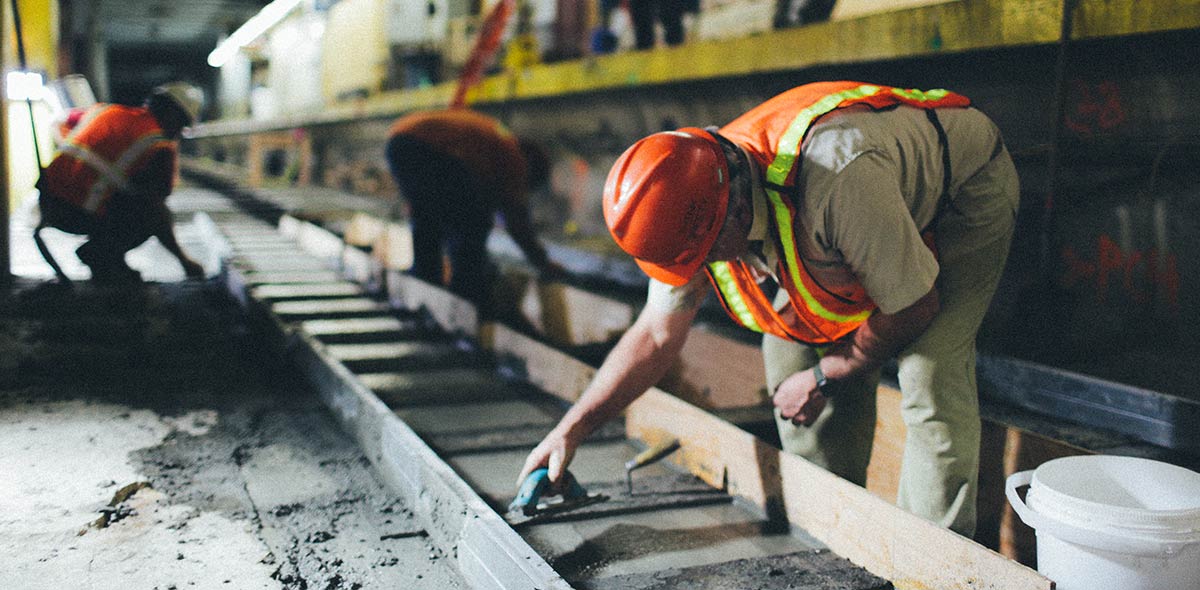
As roughly 300,000 daily LIRR commuters navigated new and different routes during the 53 days of what became known as the “Summer of Hell,” 360 Amtrak workers were working around the clock on a $30 million project to rebuild the infrastructure of one of Penn Station’s most troubled areas.
With construction having ended on Thursday, and with LIRR schedules back to normal this week, here’s a look at what took place during that time at Penn Station’s A-interlocking and on Track 10 — the epicenters of the construction projects that necessitated the summer service changes.
The project
A-interlocking is the area of tracks and switches that helps route trains arriving at Penn Station from the Hudson River Tunnels and LIRR’s West Side Yard.

Once they pass through A-interlocking, the trains are routed to the various platforms within Penn Station itself, including Tracks 13 through 21, where LIRR commuters typically arrive and depart.

Officials say aging infrastructure, along with the sheer volume of people using the hub, led to the recent spate of service disruptions at Penn Station. Rather than continue to patch problematic infrastructure, the decision was made to move forward with the summer plans to replace the equipment at A-interlocking completely, and at the same time to rebuild Penn’s Track 10.
In early July, as LIRR commuters left for work extra early for Day 1 of the “Summer of Hell,” Amtrak crews got to work.
A-interlocking
The first stage of the project required complete demolition and removal of old track and switches. Workers began by dismantling old equipment.

Heavy-duty cranes (that can lift up to 125 tons) were brought in to remove the old tracks and switches.

Many of the new pieces of track were built off-site and transported from outside locations in New York and New Jersey. Here, a new 69B switching package is loaded in Elizabeth, New Jersey …
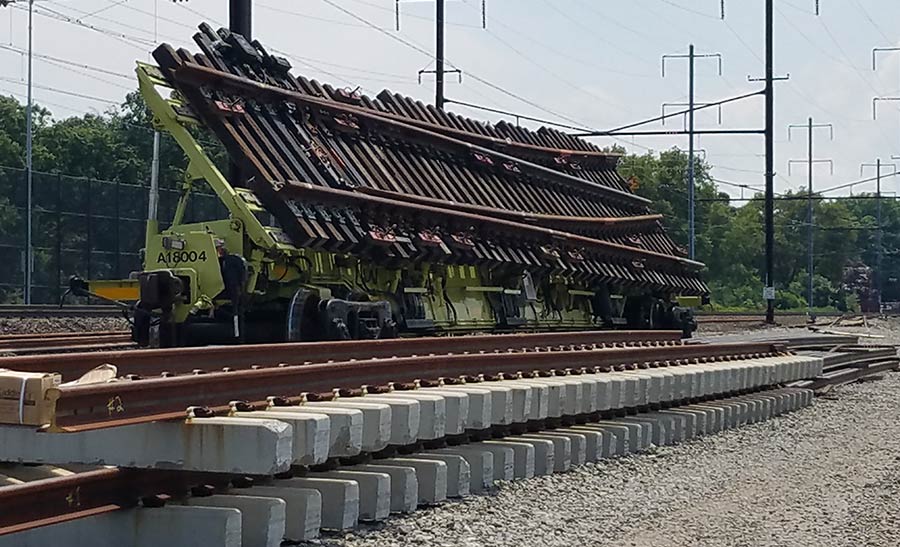
… and brought into Penn Station.
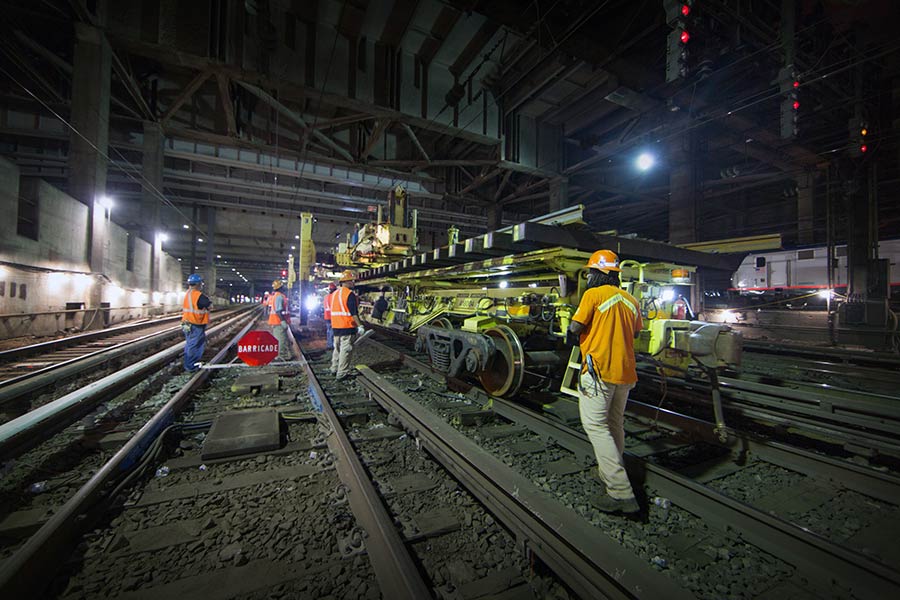
The crane would then put the new equipment into place.

With the big pieces in position, workers used equipment such as abrasive rail cutting saws to make sure the new setup met design specifications.

Once the new tracks and switches were placed, teams wired in new air-controlled switch machines.

The final step of the work at A-interlocking was the installation of new connection rails …

… and the new setup was ready to go.

Track 10
Though not used by the LIRR, the other main component of the “Summer of Hell” was a full replacement of Track 10. Work began with the full demolition of all rails, cables and signals, plus 100 yards of concrete roadbed.

After an elaborate removal process, new timber was placed, leveled and installed.

Once the formwork and new track ties were ready, concrete was brought in by the truckload by way of Penn’s “Empire Tunnel” on 10th Avenue.
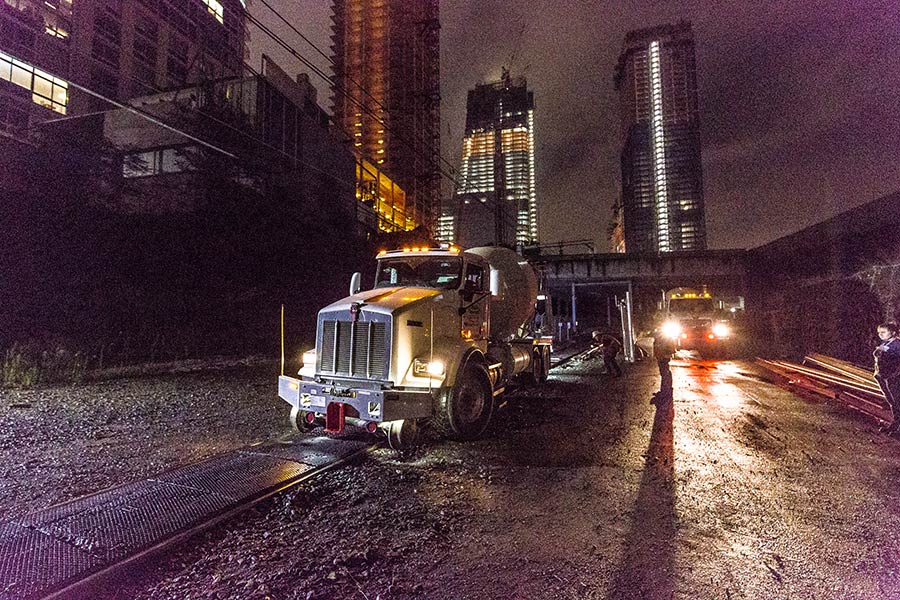
The concrete was then poured …
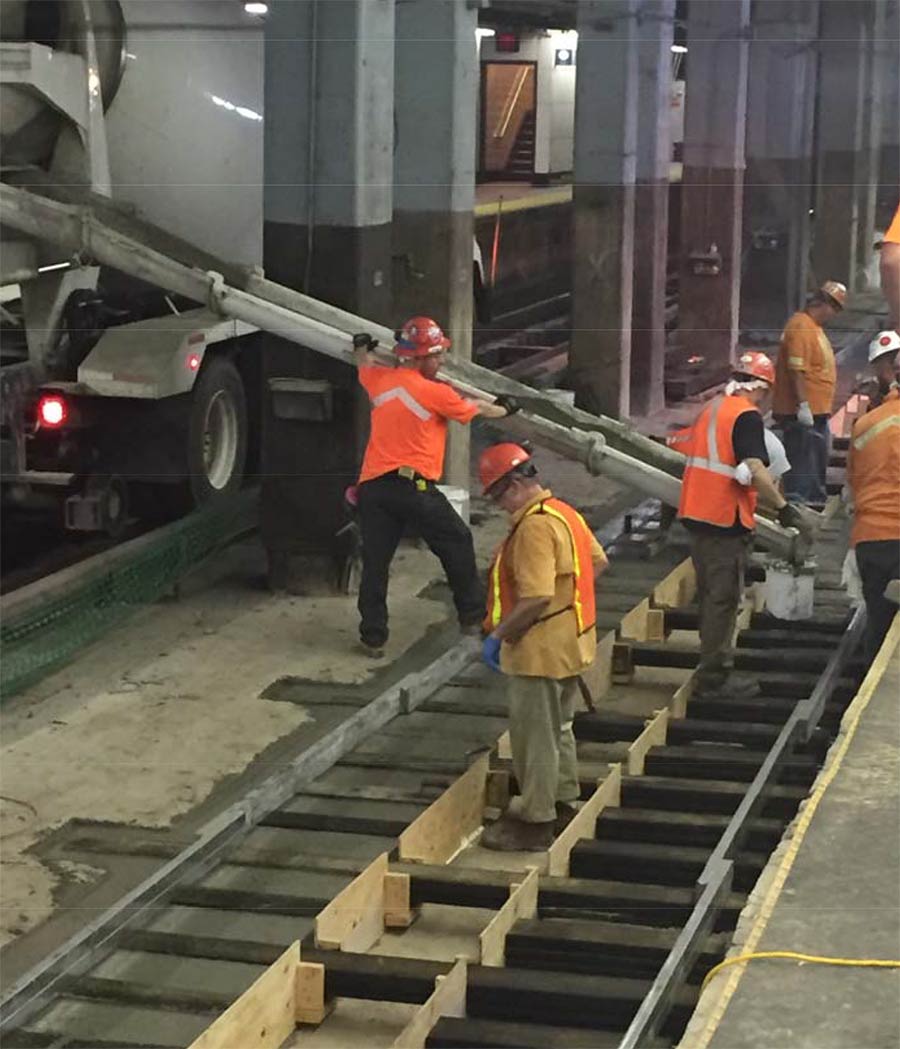
… and workers leveled it for the new track. By the fifth week of the “Summer of Hell,” 1,100 feet of concrete had been installed at Penn Station.

By Aug. 24 – a week before the construction deadline – the new Track 10 was ready to go.
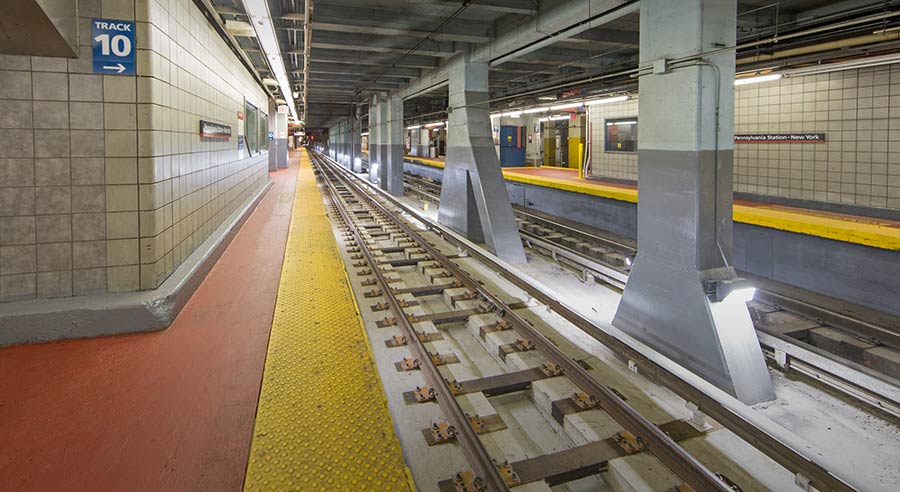 Click here for more on what’s next for the LIRR and Penn Station, and what it means for commuters.
Click here for more on what’s next for the LIRR and Penn Station, and what it means for commuters.
WITH REPORTING FROM ALFONSO A. CASTILLO
